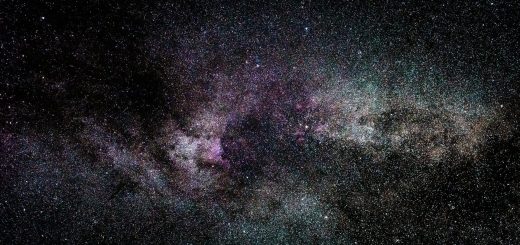What or Who Established Congress?

Before diving in, please note: This post is for informational purposes only. If you’d like to know more about how we approach topics, feel free to check out our friendly Disclaimer Page.
Hey there, amazing readers! 🖐️ Just a quick note: yes, we know there are a lot of ads here. Trust us, we get it—it’s not the prettiest look, but they help us keep this blog alive and kicking. Those pesky little ads cover the costs of all the behind-the-scenes magic, from hosting and tech stuff to creating content we hope you’ll love.
We’re committed to delivering quality posts, and your support (even just sticking around despite the ads) means everything to us. So, bear with us, and thanks for helping us keep the good vibes rolling. Now, on to the fun stuff! 😉
TRANSLATE BUTTON AT THE END OF THE ARTICLE
The establishment of the United States Congress is a pivotal moment in American history.
But when we ask “what or who established Congress?” we’re diving into the creation of one of the core pillars of the American government and examining both the individuals and the ideas that brought it to life.
Let’s break down how the U.S.
Congress came to be, the figures involved, and the process behind its establishment.
The Concept of Congress in the Early Years
To understand who or what established Congress, we need to start by exploring the historical context.
Before the formation of Congress, the thirteen American colonies operated largely under British rule, with local assemblies in each colony handling governance.
However, as tensions with Britain grew, the need for a more unified system became apparent.
The Articles of Confederation: The First Step
Before the Constitution, the original framework for government in the United States was established by the Articles of Confederation, which were ratified in 1781.
Under the Articles, Congress was created as the central body of government.
However, this Congress had limited powers and was quite weak.
It couldn’t tax or regulate trade, and the Articles did not create an executive or judicial branch, making it difficult to enforce laws or make decisions effectively.
The Articles of Confederation essentially laid the groundwork for the idea of a national legislature, but they proved inadequate for governing a growing nation.
The framers of the U.S.
Constitution would later address these limitations.
The U.S. Constitution: The Birth of the Modern Congress
While the Articles of Confederation created a version of Congress, it was the Constitution of the United States, ratified in 1787, that formally and definitively established the modern U.S.
Congress.
The Constitution outlined the structure, powers, and responsibilities of Congress, which would now consist of two houses: the Senate and the House of Representatives.
The Framers of the Constitution
The individuals behind the creation of the U.S.
Constitution were known as the Founding Fathers—a group of political leaders and thinkers who played significant roles in the American Revolution and the early years of the new nation.
Some of the most influential figures in establishing Congress were:
James Madison: Often referred to as the “Father of the Constitution,” Madison was a key architect of the Constitution.
He argued for a strong, but balanced, federal system, which resulted in the creation of a bicameral (two-chamber) legislature.
Alexander Hamilton: A leading proponent of a strong central government, Hamilton was instrumental in shaping the powers and structure of Congress, as well as ensuring that the Constitution provided the legislative body with adequate authority.
Benjamin Franklin: As a diplomat and elder statesman, Franklin’s wisdom and experience helped in the debates that eventually led to the creation of Congress and the Constitution.
George Washington: While not directly involved in the writing of the Constitution, Washington’s leadership during the Constitutional Convention and his later role as the first president of the United States helped solidify the importance of a strong national legislature.
The Constitutional Convention
The Constitutional Convention of 1787, held in Philadelphia, was the event where the framework for the new government was crafted.
A central issue discussed during the Convention was how to structure the legislative branch, which would eventually become the U.S.
Congress.
The debates were intense, as there were two main opposing viewpoints:
The Virginia Plan: Proposed by James Madison, this plan called for a strong national government with a bicameral legislature, where the number of representatives in both houses would be based on the population of each state.
This favored larger states.
The New Jersey Plan: Proposed by William Paterson, this plan suggested a unicameral legislature with each state having one vote, regardless of population size.
This plan favored smaller states that were concerned about losing power to larger states.
The compromise reached was known as the Great Compromise, which led to the creation of a bicameral Congress—the Senate and the House of Representatives.
In the Senate, each state would have two senators, regardless of population, while in the House of Representatives, representation would be based on population.
The First Congress
Once the Constitution was ratified, the first session of Congress met on March 4, 1789, in New York City, the temporary capital at the time.
This marked the beginning of the legislative body as we know it today.
The first Congress had the monumental task of establishing the laws and frameworks that would govern the newly-formed United States.
It passed crucial laws, including the Bill of Rights (the first ten amendments to the Constitution), which was essential in protecting individual liberties.
Key Figures in the First Congress
George Washington: As the first President of the United States, Washington played a significant role in setting the tone for the newly established government, including the relationship between the executive branch and Congress.
James Madison: As a representative in the first Congress, Madison championed the Bill of Rights, ensuring that citizens’ rights were clearly defined.
Thomas Jefferson: While serving as Secretary of State, Jefferson helped shape early foreign policy and worked with Congress to define the country’s direction.
Conclusion: The Legacy of Congress
To answer the question, “What or who established Congress?” it’s clear that the establishment of the U.S.
Congress was the result of a collective effort by the Founding Fathers and the provisions of the Constitution of the United States.
These individuals, through their wisdom, debate, and compromise, created a legislative body that would shape the future of the nation for centuries to come.
From its early struggles under the Articles of Confederation to the sophisticated structure outlined in the Constitution, Congress has remained a cornerstone of American democracy.
It continues to evolve but remains a testament to the foresight of those who understood the importance of a strong, representative legislative body in governing a free nation.

The Enlightenment Journey is a remarkable collection of writings authored by a distinguished group of experts in the fields of spirituality, new age, and esoteric knowledge.
This anthology features a diverse assembly of well-experienced authors who bring their profound insights and credible perspectives to the forefront.
Each contributor possesses a wealth of knowledge and wisdom, making them authorities in their respective domains.
Together, they offer readers a transformative journey into the realms of spiritual growth, self-discovery, and esoteric enlightenment.
The Enlightenment Journey is a testament to the collective expertise of these luminaries, providing readers with a rich tapestry of ideas and information to illuminate their spiritual path.
Our Diverse Expertise 🌟
While our primary focus is on spirituality and esotericism, we are equally passionate about exploring a wide range of other topics and niches 🌍📚. Our experienced team is dedicated to delivering high-quality, informative content across various subjects ✨.
To ensure we provide the most accurate and valuable insights, we collaborate with trusted experts in their respective domains 🧑🏫👩🏫. This allows us to offer well-rounded perspectives and knowledge to our readers.
Our blog originally focused on spirituality and metaphysics, but we’ve since expanded to cover a wide range of niches. Don’t worry—we continue to publish a lot of articles on spirituality! Frequently visit our blog to explore our diverse content and stay tuned for more insightful reads.





